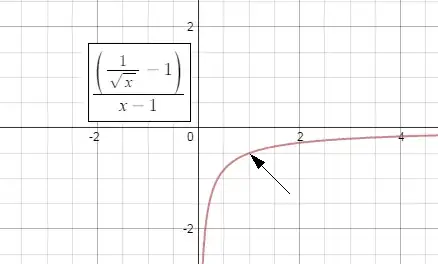I posted a solution here with an illustration (see below) and commented that the function was discontinuous at $x=1$, where it is undefined. Someone told me, no, it is undefined but continuous.
Now I'm confused.
I would have thought that the point $(1, -1/2)$ in the graph below should be designated with a hollow point (a point that isn't filled in) to demonstrate that that point is not actually on the graph. Furthermore, I thought that this hole would constitute a discontinuity.
If I need to be set straight here, could someone please help me out?
